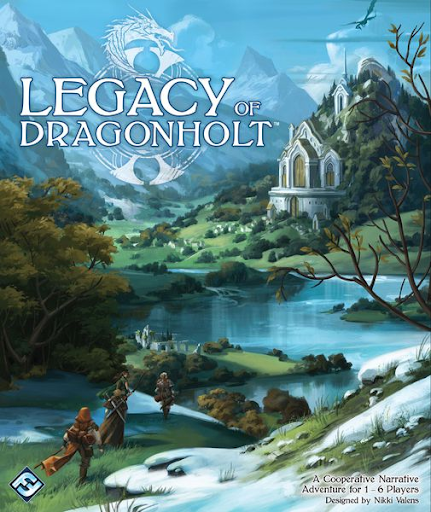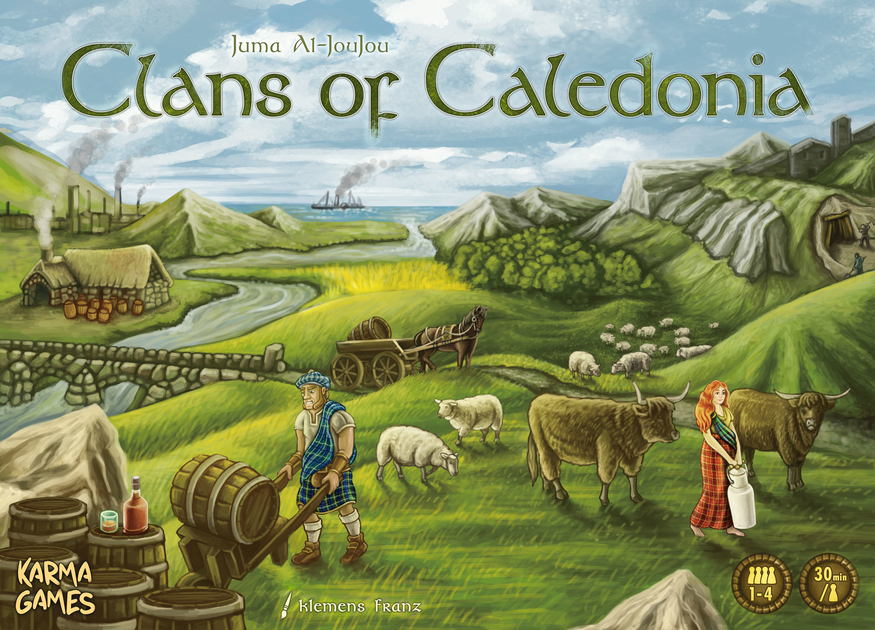Pocket Mars - Earth Attacks!
Designed by Michał Jagodziński
Art by Jaroslaw Wajs
Published by Grey Fox Games
15-30 Minutes ~ 1-4 Players
Review by Jack Eddy
Mars is so hot right now. Well, at least metaphorically speaking. With no shortage of Mars related games on the horizon, Grey Fox Games has elected to take the tiny-yet-mighty approach, competing with the likes of the Tiny Epic series in a small scale game with relatively big impact. Fortunately for us, it rarely loses scope, almost always maintaining a good balance of meaningful decisions with compact, bite-sized fun.
Shipping Up To Boston (Gameplay)
This game is an act of shifting your seven dudes / dudettes from Earth to Mars. Doing so triggers the end of the game, though scoring accounts for a bit more than “LOL ME FIRST”. The play area contains 5 martian buildings, a deck of cards to draw from, each player’s spaceship, and Earth - the home of derelict meeples anticipating their great journey.
In one of the more clever card systems I’ve recently seen, the meat of the game is found in the project cards. At the end of any player’s turn, all players must always have four cards - two in hand and two face-down in front of them, making up their “prep module”. While the front of the cards show a strength, color (suit) and two abilities, their backs also reveal their color, which corresponds to the five different buildings. It’s actually kind of cool that even while shuffled together, the back of the card communicates a tiny bit of information from the draw pile, letting you know what color card is “on deck”.
On a player’s turn, they can take one action, usually playing a card for it’s “discard” effect, or putting it into play from their prep module for it’s “put into play” effect. When put into play, the card is placed in a stack near the corresponding building color, and if the strength of your card exceeds the last played one in the stack, BOOM! You put a dude from your ship into that building. Whether your strength exceeds or not, you resolve both the effect of the building and the card.
There are a few other actions, too, including pitching cards to gain energy (a resource needed for some actions), or even putting a card into play from another player’s prep module. You don’t know it’s strength or ability, but this is a great way of both messing with your opponents plans and resolving the effect of the building, though the player whose card you jacked gets to resolve the card’s “put into play” effect.
And thus, play continues. Occasionally effects will interact with other cards you have in hand or increase or decrease your energy (the one tracked resource in the game), but for the most part, the abilities and effects of the game involve changing an astronaut’s placement from earth to the ship, from the ship to a building, from a building to another, or from the standard “1 Star” side of a building to the more exclusive “2 Star” side of a building, which matters for bragging rights and scoring.
Finally, players get points at the end of the game for astronauts on buildings (more for being on the 2 star side), consolation points for your poor saps still on your spaceship, then bonuses for having dudes in each of the 4 occupiable buildings and having 4 dudes in one of the buildings. Oh, and a tiny bit of extra points for ending the game with the most energy.
Winds Coming Down From Olympus Mons (Flow & Feeling)
There’s something really industrial about this game’s rhythm. Like some futuristic robot factory, everything is in sort of a limbo until it is moved from one holding chamber to another. Colonists going from earth to ship, ship to mars, building to building, side to side. This mechanical swing extends to the prep modules too, always checking to see that you have a total of 4 cards, then refilling your module; deck to hand, hand to module, module to play.
And don’t get me wrong, this rhythm is one of the things that I like the most about this game. It’s not that you are programming your turns, but it makes the turns themselves very fast, intuitive, and feel like you are always gauging your long term goals versus what you have on hand in terms of availability.
I also really like the sort of “every part of the buffalo” vibe to the components. Each card is multi use, and every card is used, apart from the player specific spaceships and reference cards if playing with less than four players.
Though this isn’t a particularly interactive game, the player interaction that is there is direct, but never to such consequence that it feels “mean”. Sometimes you’ll deviously shift an opponent out of their two-star location, only to shift yours in, reaching the maximum occupancy. Other times you might foil their plans by utilizing a card from their prep module.
Notably, this mechanical nature is also indicative of how little the theme is integrated into the game. While the visuals are actually pretty awesome (including the super rad box art), the game quickly boils down to colors and numbers, emitting virtually no thematic resonance to the visuals (including the super rad box art). That said, the presentation is great, with good table presence, bold colors, and surprisingly great artwork and iconography.
It’s Lonely Out in Space (Solo Mode)
In a world of great solo modes, Pocket Mars is merely passable. I was really hoping that this could be a great travel solitaire type of game, but it lacks the type of elegance that I really need for this small scope. In fact, that’s why solo runs at such a contradiction to the really enjoyable flow of the standard game.
In solo mode, you are playing against the Devious Automatics company, who is launching their own duders into play. Functionally, their prep module acts as a loading dock for your upcoming cards, as anytime that you need to draw cards, they must come from this prep module. What’s left in their module determines where their units go and how they activate buildings, though the building have different abilities when activated by the automated player, and must be referred to in the 5 dedicated pages in the rulebook for.
Furthermore, the rules for the solo mode have such terrifying language as “You must optimize the placement of the DA Colonists so as to maximize the DA’s final score as best you can.” If there is one thing I hate about automated players, it’s when they aren’t automated.
It’s not all bad though, there are some great aspects of the solo game. The way time runs out by pitching cards each turn creates a snappy pressure, and the strategy involved in deciding how to interact with the DA’s prep module adds a new dimension to the basic gameplay; but overall it never felt comfortable or second nature, reaching the sort of ease that is so appealing about the multiplayer game.
Liftoff (Final Thoughts)
Pocket Mars is going to adorn my office shelf where it will be perfectly suited for lunchtime play. Fast, snappy, and easily portable to our local coffee joint; this scope of game is exactly what I’m looking for in a small box game. I like that it encourages player interaction, but allows you to more or less focus on your strategy; each turn isn’t dramatically consequential, but chaining sequential turns together you can realize your Martian dreams.
Aside from solo, If there are some criticisms, it’s that the rulebook, at a whopping 19 pages long, is too dense for what this game is, and should have been condensed for easier learning and navigation. Furthermore, I feel like repeated play day in and day out could get stale as their aren’t any branching strategic paths such as asymmetric abilities or engine building, so this might not be the ideal game to tide you over on a longer vacation, tempting as it’s small stature might be.
But, like I said, it is a game I plan to keep. Abstract and mechanical, vibrant and eye-catching, this game delivered exactly what I wanted it to. Pocket Mars is full of smart, intuitive choices and bite sized Martian fun.
Got questions about the game, the review, or the creative process? Let us know any we may tackle it when we publish our audio version with additional thoughts and Q&A on TCbH Reviews.
Review copy of Pocket Mars has been provided by Grey Fox Games.
The Cardboard Herald is funded by the generous support of readers, listeners, and viewers like you. If you'd like to see more content like this, you can support us on Patreon here.
Other recent written reviews:





































